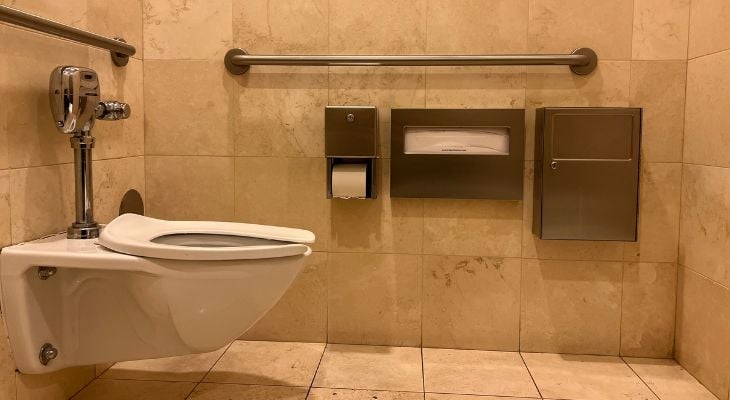
How You Can Make Your Commercial Bathroom ADA Compliant
Creating an inclusive and accessible environment is a priority for businesses today. You want every visitor to feel comfortable and welcome.
Adhering to the Americans with Disabilities Act (ADA) means considering several key features in your restroom design. You can make your commercial bathroom ADA compliant by following a few steps and guidelines.
Understand the Basics
Understanding ADA guidelines is the first step in compliance. The ADA sets specific standards for layout, fixture height, and accessibility. Entrances must accommodate wheelchairs, with doors that open easily and provide ample clearance.
Sinks and countertops should sit at a height reachable from a seated position, with faucets that operate with one hand. Grasping the essentials of these standards ensures that your bathroom caters to everyone.
Install Proper Fixtures
Choosing the right fixtures plays a crucial role. Grab bars near toilets and in showers provide necessary support. These bars should handle a significant amount of weight and be installed at the correct height.
Mirrors and dispensers should also be placed within reach for all users. Installing such fixtures not only complies with the law but also enhances safety and usability for everyone.
Choose the Right Accessories
Accessories also contribute to a compliant bathroom. Invest in commercial restroom accessories that enhance functionality and accessibility. Paper towel dispensers, soap dispensers, and hand dryers should all be easy to use.
They must be within reach and require minimal effort to operate. Selecting the right accessories can significantly impact the user experience and ensure your restroom meets ADA standards.
Space and Layout Considerations
The layout of your bathroom must allow for easy navigation. Ensure that enough space exists for a wheelchair to turn around comfortably.
Doors should open outward or slide to avoid blocking paths. Stalls need ample room, and toilets should be positioned to allow side transfers from wheelchairs. Thoughtful layout planning reduces barriers and increases accessibility.
Signage and Visibility
Clear signage enhances accessibility by effectively guiding users. Signs indicating accessible facilities should be visible and easy to read.
Braille signs assist visually impaired users, while proper lighting improves visibility for everyone. Good signage not only meets ADA requirements but also ensures a smooth experience for all restroom visitors.
Regular Maintenance and Updates
Maintaining an ADA-compliant bathroom involves regular checks and updates. Fixtures can wear out over time, and new regulations may require updates.
Routine inspections help you stay on top of necessary changes. Consistent maintenance ensures that your restroom remains functional and compliant, providing a safe and welcoming environment for all users.
Training and Awareness
Educating your staff about ADA compliance increases awareness and ensures ongoing adherence to standards. Training sessions can highlight the importance of accessibility and how to maintain compliance. When everyone understands the value of an accessible bathroom, your business can uphold its commitment to inclusivity.
Incorporating these practices into your restroom design will help you make your commercial bathroom ADA compliant. Compliance fulfills important legal obligations while also fostering an inclusive and respectful atmosphere for all visitors. Prioritizing accessibility shows your business’s dedication to serving every individual, which enhances its reputation and generates customer satisfaction.


